
Your nonprofit’s mission is the foundation of everything you do. It’s your north star, your guiding principle, and your roadmap to changing the world. Your nonprofit mission statement is how you communicate your organization’s impact to supporters, clients, and the community at large.
As a critical element of your brand, your mission statement needs to represent your organization’s ethos but also be informative, succinct, and moving to your supporter base. To help your organization create a powerful nonprofit mission statement that follows best practices, we’re covering the following topics:
- What Is a Nonprofit Mission Statement?
- Why Nonprofit Mission Statements Are Important
- Two Signs That Your Mission Statement Needs to Be Updated
- How to Write A Nonprofit Mission Statement in 7 Steps
- 10 Awesome Nonprofit Mission Statement Examples
- How to Share Your New Mission Statement
If you want to skip ahead to any of those topics, just click the topic you want to visit, and the link will take you straight there.
All right, let’s get started.
What Is a Nonprofit Mission Statement?
A nonprofit mission statement is the messaging an organization shares, displays, and uses as a guiding principle. Mission statements are typically short and to the point, briefly communicating the nature of the organization’s work, impact, goals, and values. A nonprofit mission statement also serves as inspiration for employees, donors, and volunteers and provides the public with an overview of the organization’s mission and purpose.
The best nonprofit mission statements always include—at a base level—the following components:
- Purpose: What mission is your organization trying to achieve? Why does your nonprofit exist?
- Impact: What impact do you hope to make in the world or your community? What positive outcomes are you aiming to create?
- Values: What are the core values that guide what you do and how you choose to do it?
With a well-crafted mission statement, your nonprofit can present a clear, concise picture of what you do and why.
Why Nonprofit Mission Statements Are Important
A mission statement is incredibly valuable because it provides clarity on what your nonprofit does. It should provide a clear explanation of the work you do and resonate with everyone involved—from top-level board members to the beneficiaries of your work.
A strong mission statement inspires donors to give, outlines what your nonprofit does, and builds trust in the community that your nonprofit can fulfill its promises. An effective mission statement does all of that in a clear, concise, and cohesive manner that aligns with your brand.
Two Signs Your Mission Statement Needs to Be Updated
Experts recommend re-evaluating your mission statement every three years. Use the criteria below to decide if your nonprofit’s mission statement could benefit from an upgrade.
1. There Has Been a Change In Your Nonprofit’s Scope
Over time, technology, politics, and culture will impact your mission and how you approach it. You might identify a new area of need or a more efficient way to make an impact, but if you pivot your programs and donors don’t understand why, you risk losing their trust. If your organization changes its scope, you need to adapt your messaging.
If you answer yes to any of the following questions, you’re likely due for a rewrite.
- Do you offer any new programs?
- Have you narrowed or expanded your mission?
- Have you limited or expanded your service area?
- Are you working with new demographics?
- Have you had any major changes in funding?
- Has your mission pivoted due to a global or local event?
If your nonprofit has made any large-scale changes, your team should sit down and assess whether your mission statement still accurately reflects your work.
2. You Receive Feedback That Your Mission Statement No Longer Resonates
Soliciting donor feedback is a critical step in a donor retention strategy. In addition to asking how donors want to be communicated with and if they are interested in specific program updates, you should ask high-level questions to find out how they feel about your work and mission.
Here’s an example. If you started as an animal shelter in San Diego, but after years of dedicating a lot of resources to rescuing and rehabilitating stray dogs from Tijuana, your nonprofit may have inadvertently changed your scope without realizing it. You might still see yourself as a local animal shelter, but if 80% of your programmatic impact reports focus on one cohort of service (in this case, dogs from Tijuana), some of your donors may not feel the same connection to your mission.
Rewriting your mission statement to more accurately represent your work can help you build deeper and lasting connections with supporters because they can see the explicit impact you have on your cause. You are also more likely to attract dedicated donors to your cause because they know immediately where you focus your work.
You can help your nonprofit connect with donors at every stage of the moves management process by downloading the worksheet below:
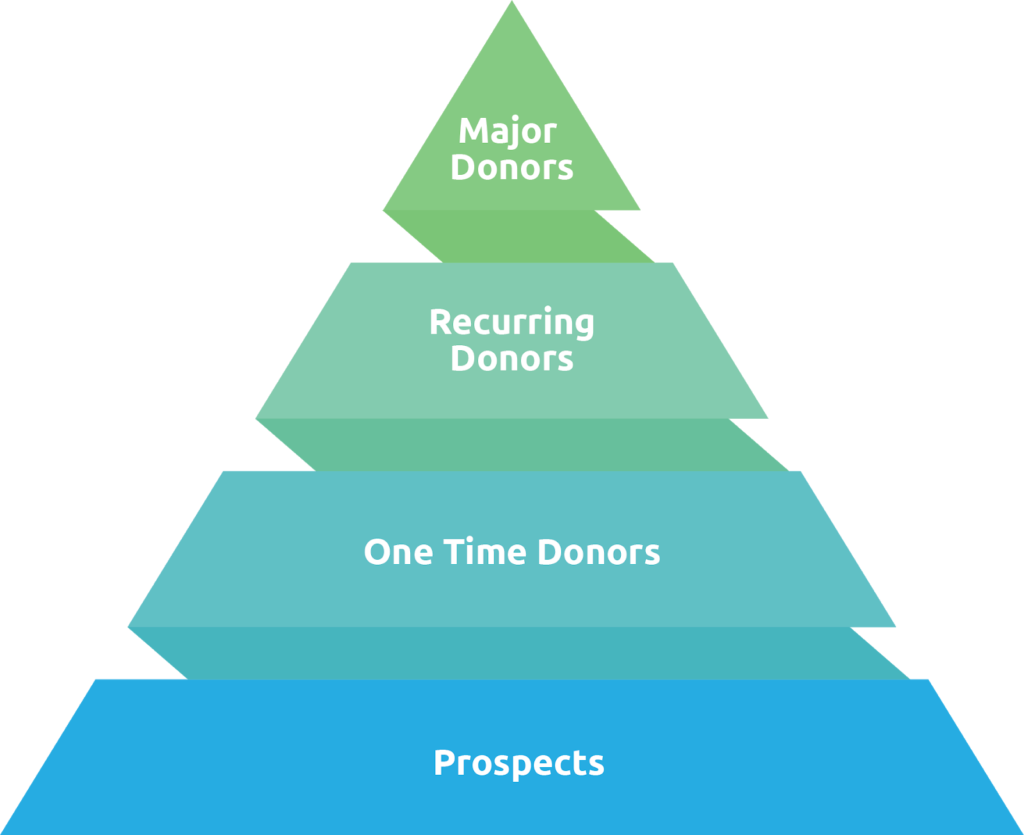
Moves management depends on communication.
Download this worksheet to help you move your donors to the next level.
How to Write A Nonprofit Mission Statement in 7 Steps
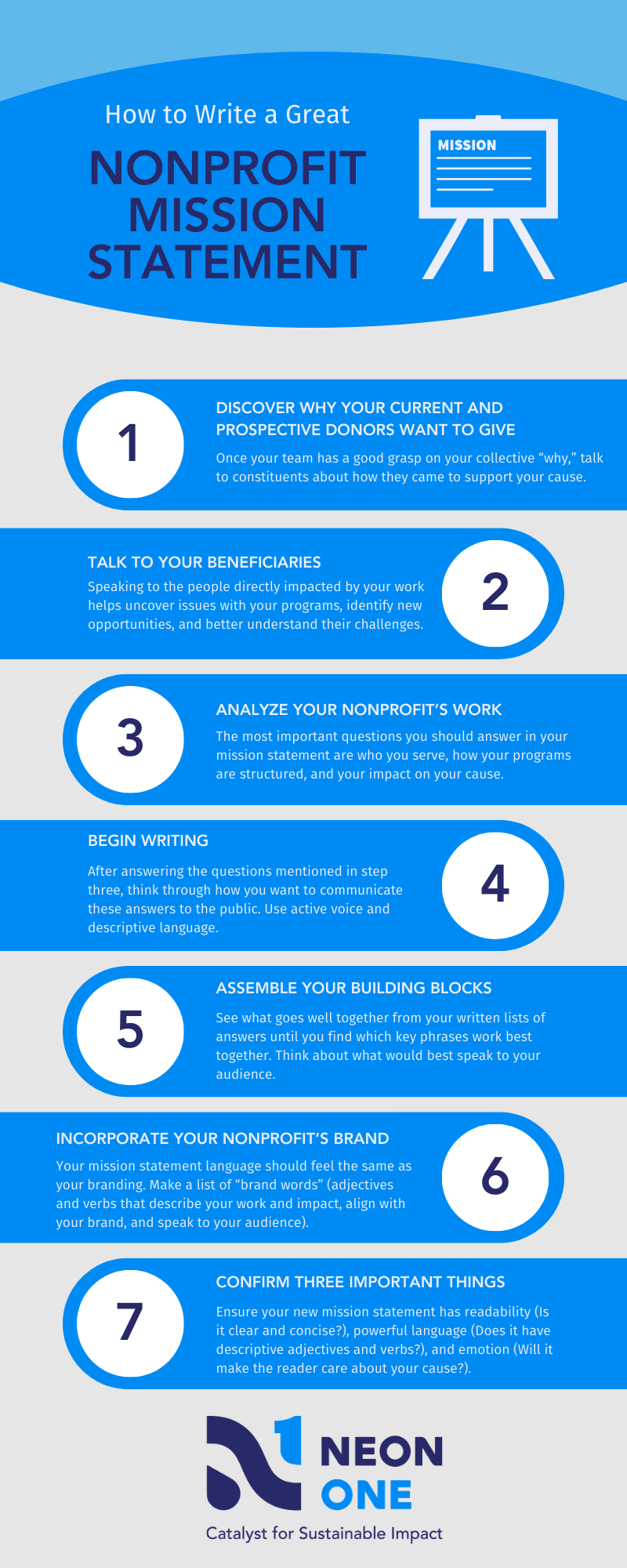
Step 1: Discover Why Your Current and Prospective Donors Want to Give
Once your team has a good grasp on your collective “why,” talk to constituents about how they came to support your cause. If you don’t already have this information, consider conducting a donor survey. Ask donors about their original motivation to donate, what other causes or nonprofits they support, if they volunteer, and any other questions that can provide insight into their relationship with your cause.
Next, ask about what language resonates with them. How do they describe your work or your beneficiaries? What verbs do they use to describe your mission and what you do? Is there any overlap with your mission statement? Or does your mission statement use jargon and unnecessarily complicate your work?
To engage prospects who have not yet given to your nonprofit, look at other organizations with similar causes. How do they communicate what they do? Is it more streamlined or more descriptive? Think about how you can differentiate yourself.
Step 2: Talk To Your Beneficiaries
Talk to those who have been positively impacted by your nonprofit’s work to help your team understand the impact of your work.
How have your programs improved their lives? Are there any specific elements of your work they are interested in? Do they have ideas on how you can improve? By speaking to the people directly impacted by your work, you can uncover issues with your programs, identify new opportunities, and better understand the challenges they face.
This input can help you measure the success and impact of your programming more objectively. It’s one thing to be able to convince donors why your nonprofit is the best equipped to tackle your cause, but the beneficiaries’ opinions are the best source you have to assess where you succeed the most. Feedback from your beneficiaries will help you determine if the intended impact of your work matches up with reality.
Step 3: Analyze Your Nonprofit’s Work
The most important questions you should answer in your mission statement are who you serve, how your programs are structured, and your impact on your cause.
Think critically using the guiding questions below to help you most accurately represent your nonprofit in your new mission statement.
Who Do You Serve?
Be explicit about who you serve. The details will vary depending on your organization’s cause, but sharing specific information about your beneficiaries can help potential supporters connect with your mission.
What Are Your Programs and Services?
Next, look at your nonprofit’s programming and service offerings. Think about why your nonprofit offers these things. What makes your offerings the best solution to fulfill your mission?
Do nonprofit organizations with similar missions have similar programs and services? What about your nonprofit work is unique?
What Is Your Impact?
Lastly, think about the impact of your work. How does what you do benefit the community? What have you seen as positive results of your nonprofit’s work?
Conversely, what would happen to your community without your nonprofit’s presence?
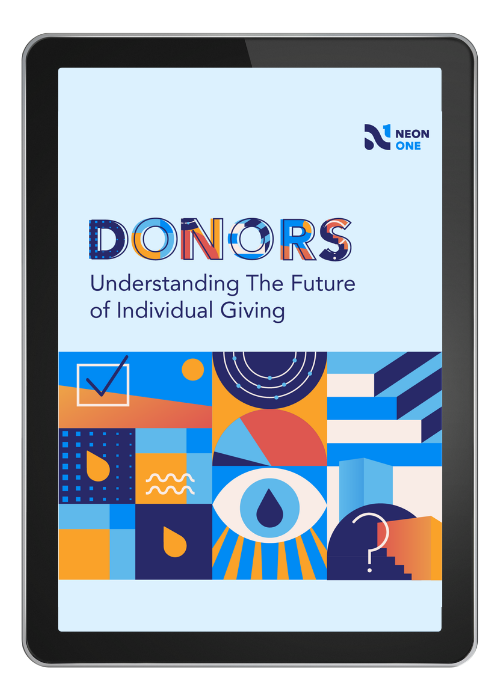
Want to learn more about your donors?
This 2022 report features industry data, trends, analysis to help you better reach your donors.
Step 4: Begin Writing
After answering all the questions above, think through how you’d want to communicate these answers to the public. Write out your answers in as many ways as possible. Be sure to use active voice and descriptive language. If you’re doing this as a team, give everyone 30 minutes to come up with their own lists and compare notes.
Step 5: Assemble Your Building Blocks
See what goes well together from your written lists until you find which key phrases work best together. Think about what would best speak to your audience.
Keep all of your lists of answers to the questions above. They could be helpful in finding new ways to talk about your mission in your fundraising appeals, grant proposals, and more.
Step 6: Incorporate Your Nonprofit’s Brand
Branding unites everything you do. Think about how you would describe your nonprofit’s brand. The language in the mission statement should feel the same way that the brand feels.
We recommend keeping a list of “brand words.” These are adjectives and verbs that describe your nonprofit’s work and its impact, align with your nonprofit’s brand, and best speak to your audience.
Step 7: Confirm Your New Nonprofit Mission Statement Has These 3 Things
Readability
Your mission statement should be clear and concise. Anyone should be able to understand it—not just those with experience in your field—so avoid using jargon.
Your mission statement should be clear enough that it picks up where your nonprofit’s name leaves off. Your name and your mission statement should tell prospects everything they need to know about your organization.
Concise, Powerful Language
Your list of brand words should contain descriptive adjectives and verbs. Every word you use in your mission statement is an opportunity to tell us something about your nonprofit. Cross-reference your words with a thesaurus.
Take, for example, “we do.” The alternatives “we achieve” or “we determine” are far more descriptive. Choosing the word “achieve” implies that you are consistently solving tangible goals, whereas “determine” means that you are making decisions through analysis or research.
Remember: Every word counts!
It Evokes Emotion
You have to make the reader care about your cause when they read your mission statement. Think about what will happen to your constituents if you can’t provide your services and tell that story.
10 Awesome Nonprofit Mission Statement Examples
1. I Support The Girls
“Through an international network of Affiliates, I Support the Girls collects and distributes essential items, including bras, underwear, and menstrual hygiene products, allowing women and folx experiencing homelessness, impoverishment, or distress to stand tall with dignity.”
I Support The Girls’ mission statement explains who they help, what they do, and how they do it. They describe the emotional impact of their mission when describing their goal to allow women and folx to “stand tall with dignity.”
Their statement also answers a question that may come up. Since using the gendered noun “girls” in their organization name, homeless people who identify as trans or nonbinary may wonder if this organization will prevent them from receiving supplies due to their gender orientation. By including the word folx in their mission statement, I Support The Girls clarifies that their services are trans-inclusive.
2. Iowa Healthiest State Initiative
“To become the healthiest state in the nation by improving the physical, social and emotional well-being of Iowans.”
Iowa Healthiest State Initiative‘s mission statement answers the question one would ask once reading the nonprofit’s name: What does it mean to be the healthiest state? Improving social and emotional well-being alongside physical well-being. Simple, clear, and concise.
3. Mikva Challenge
“Mikva Challenge develops youth to be empowered, informed, and active citizens who will promote a just and equitable society.”
What stands out about Mikva Challenge is the intentional language used in describing their constituents (empowered, informed, active citizens) and their impact (preparing youth to promote a just and equitable society).
Their word choice alludes to their core values. By using the future tense in describing their impact, their youth will “promote a just and equitable society,” they show that they are forward-thinking. We know Mikva Challenge is working toward long-term impact and creating the future they want to see through their development programs today.
The descriptive language to describe their nonprofit makes it abundantly clear that they are an advocacy organization that focuses on strengthening youth activism.
4. Girl Talk
“We inspire all girls to be confident leaders through peer-to-peer mentoring programs.”
At Girl Talk, their nonprofit mission statement successfully and succinctly communicates what they do, who they do it for, and how they do it. Anyone can view this mission statement and get a grasp on what Girl Talk stands for and the type of work they do for their target demographic.
The intentional language in their mission statement—all girls—also underscores one of the program benefits listed on their website: The young women participating in Girl Talk will get to “grow in an inclusive environment.”
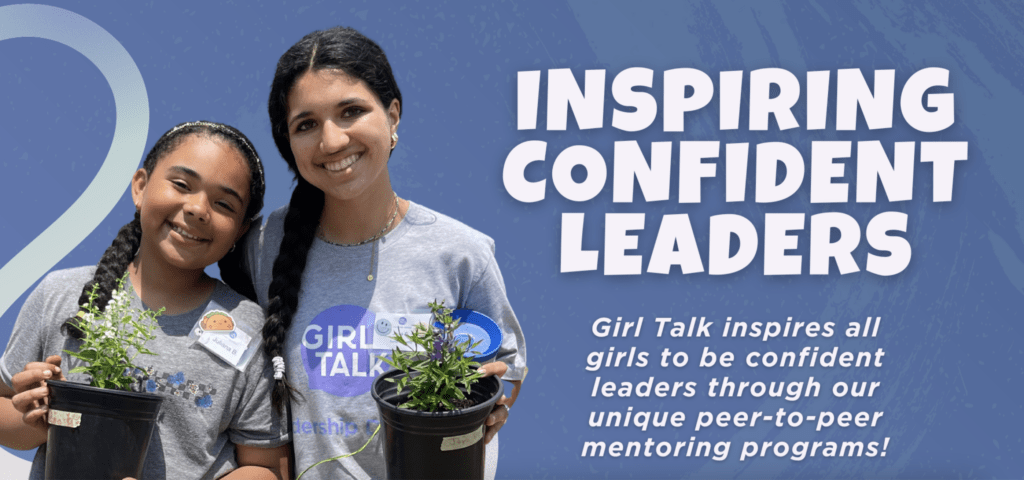
5. UTOPIA Washington
“To provide sacred spaces to strengthen the minds and bodies of QTPIs – Queer and Trans Pacific Islanders – through community organizing, community care, civic engagement, and cultural stewardship.”
This mission statement explains the relationship between the members of their organization, their programming, and their impact very well. UTOPIA Washington’s use of the phrase sacred spaces gives the impression that they go above and beyond to ensure that all their programming is inclusive and welcoming.
Then, by specifying they strengthen the minds and bodies of QTPIs through their programming, they clarify that their values of civic engagement and community organizing help bring people together and strengthen the minds and bodies of their beneficiaries as individuals. Their use of community twice in the mission statement really emphasizes how important the community aspect is to what they do.
This mission statement was written for their entire constituency. This language would really resonate with a QTPI activist looking for an inclusive, welcoming community organizing group or someone who wants to provide the QTPI community in Washington with a sacred space.
6. Creative Aging
“Creative Aging enhances Mid-South seniors’ quality of life by stimulating their minds, creativity and sense of self through arts programs that engage, educate and entertain.”
Creative Aging’s mission statement conveys key details about its mission without being too long. This nonprofit’s mission statement covers the demographic they serve (Mid-South seniors), what they do for this demographic (stimulating their minds, creativity, and sense of sense), and how they accomplish it (through arts programs).
7. High Fives Foundation
“Create a universal shift in adventure sports that expands what is possible for those who have faced life-changing injuries.”
What’s impressive about the High Fives Foundation’s mission statement is its ability to briefly summarize its unique purpose. In one powerful sentence, this nonprofit covered their who, what, and why.
8. Cystic Fibrosis Research Institute (CFRI)
“To be a global resource for the cystic fibrosis community while pursuing a cure through research, education, advocacy, and support.”
The Cystic Fibrosis Research Institute (CFRI) has a big mission and a wide range of ways they pursue it. Still, this nonprofit didn’t need to draw out its mission statement. CFRI’s mission statement is a great example of concisely answering the question: “Why do you exist?” with an effective “To be…” statement.
9. Can Do Canines
“Can Do Canines is dedicated to enhancing the quality of life for people with disabilities by creating mutually beneficial partnerships with specially trained dogs.”
As an organization that provides assistance dogs, Can Do Canines has a mission statement that effectively highlights what’s special about their work. Additionally, this nonprofit’s mission statement shares—in short, appropriately descriptive language—why they exist, who they serve, and how the dogs help.
10. Ceres Community Project
“We create health for people, communities and the planet through love, healing food and empowering the next generation.”Ceres Community Project’s mission statement begins with “we,” emphasizing the team and community involvement necessary for their work. Theirs is a great nonprofit mission statement example because it’s an excellent (and brief!) overview of what they do, why, and how. Mission statements like this one give all important parties—donors, staff, volunteers, and potential donors—just enough information to understand the organization’s general purpose.
How to Share Your New Mission Statement
Once you have a well-written mission statement, then it’s time to share it with the world.
Legal Obligations of a Mission Change
Depending on the reasoning behind your change in mission, you may be required to notify the IRS and any organization that provided you with grants or other large-scale funding according to the charitable trust doctrine.
Getting The Word To Your Audience
Update Your Website
Your mission should be front and center on your nonprofit website and online donation pages. If it’s not already, the launch of a new mission statement is a great reason to redesign your website.
An excellent solution for nonprofits who already have a mission statement as their website’s focal point and for those who cannot redesign their website is the use of pop-ups or banners.
This is a website feature that creates a temporary message at either the very top of a webpage (banner) or that occludes your screen until you close it (pop-up). If you go this route, be very selective about which pages you include banners or pop-ups, it can be irritating to a user to see the same pop-up on every page of your website.
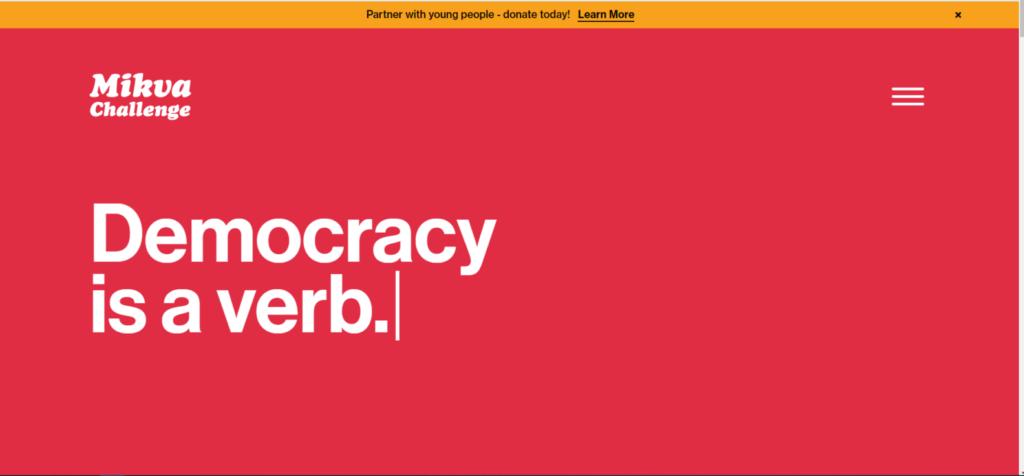
This example of a popup banner on Mikva Challenge’s website is a great example. It stands out by being a separate color from the rest of the webpage but is not invasive to the reader. You can also easily close it by clicking the x. As with any website update, make sure that you’re creating an accessible experience for all users, including those with disabilities.
Also, consider writing a short article or blog post to provide more details to your constituents. These easy website updates will spread the word to anyone visiting your website. For some website inspiration, check out the article below.
Share Via Social Media and Email
Once you make changes to your website and mission statement, ensure your supporters are aware of the updates by promoting through your regular channels of communication.
Here are a few ways to spread the word:
- Change your social media bios to your new mission statement.
- Post an announcement of your new mission statement on social media that links back to your website.
- Depending on your nonprofit’s email strategy, consider sharing the news as a standalone message or in your next newsletter.
Your Mission Statement is Your Nonprofit’s Brand Foundation
A great mission statement motivates donors to give, describes what your nonprofit does in a clear, concise, and cohesive way, and builds trust in the community that your nonprofit is making a difference.
It also elevates and builds trust in your nonprofit’s brand. But a mission statement is merely one aspect of your organization’s brand. To learn more about how to unify and strengthen your nonprofit’s brand to align with your values, download the guide below.

Better Branding For Nonprofits
Learn what you’ll need to build a cohesive brand for your nonprofit.
Join the discussion in our Slack channel on connected fundraising







